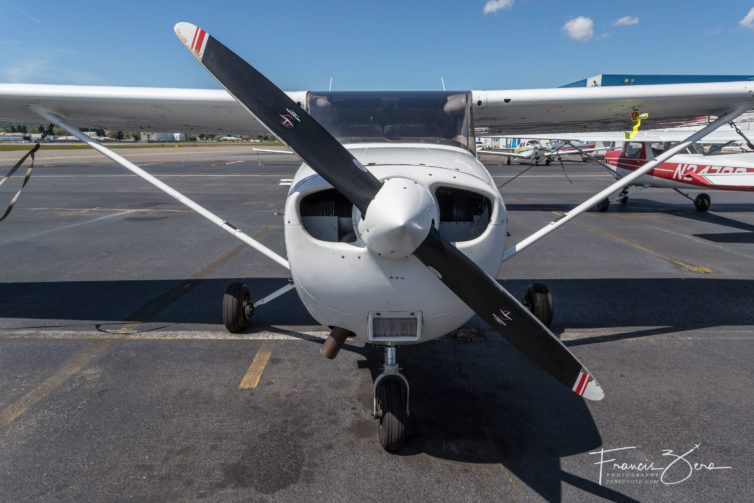
The business end of a Cessna 172, the type of plane I’ll be training in
Yep. I’m finally doing it.
After close to a decade of talking about taking flying lessons, and after a couple of false starts, I’ve plunked down my money and started ground school last month with Galvin Flying at King County International Airport, aka Boeing Field, aka BFI, in Seattle.
Flying is both a spendy and time-intensive process. I’ve taken a number of introductory flight lessons, and at one point I actually started flight training with a private instructor and self-guided ground school (that’s the experience that made me realize a formal program would be better for me). I’ve also ridden along with several friends and their instructors on their own training flights.
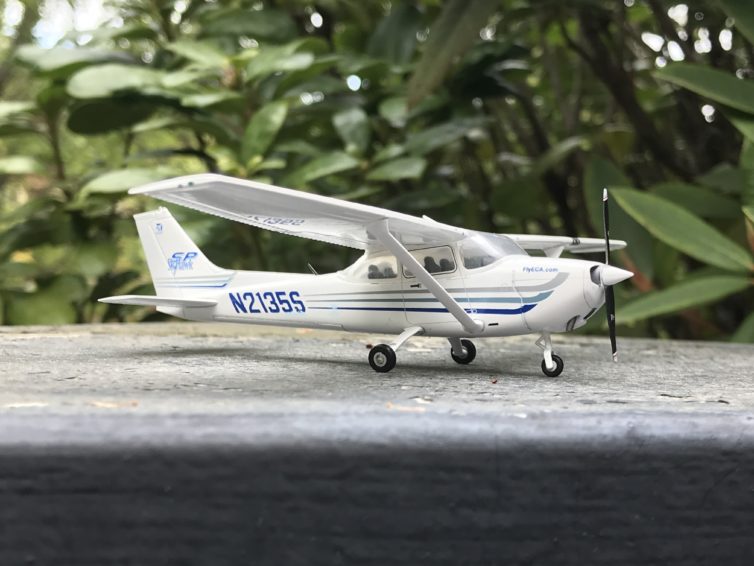
Of course I needed a model C172 to help with training
Anyway, here I am, about halfway through ground school. Now, as JL has already told you, formal ground school is optional, as there are many legit self-study options available that will prepare you for the FAA written exam. Key to any learning endeavor – especially one for folks for whom school of any kind is a couple of decades in the past – is knowing your learning style preferences.
From experience, I know that my most effective learning style is a combination of books and a human instructor, hence my choice of classroom-style ground school. Other folks might prefer videos, still others might choose a self-paced pre-packaged program; all those options are available.
Student pilot requirements get their own chapter in the FAR/AIM, which is the combined set of Federal Aviation Regulations (FAR) and the Aeronautical Information Manual (AIM). It’s the bible for flying in the U.S. I’m here to tell you that it definitely contains lots more rules and regulations than the real Bible.
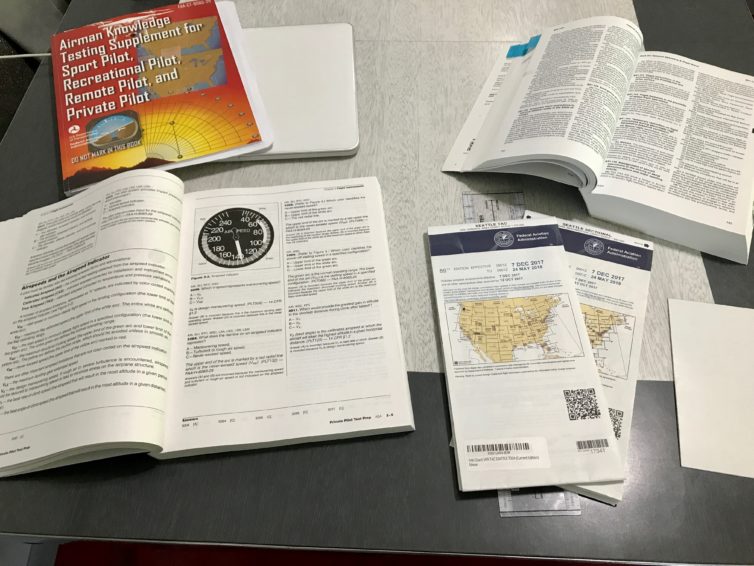
Feels like I spend a lot more time with books than with airplanes at this point in the training
A friend who’s also a flight instructor once told me that reading the FAR/AIM is like reading the history of aviation, written in rules that are based on mishaps or near misses. Many of the rules or bits of information in there are based on a hard-learned lesson. The legal sections also function as an effective sleep aid.
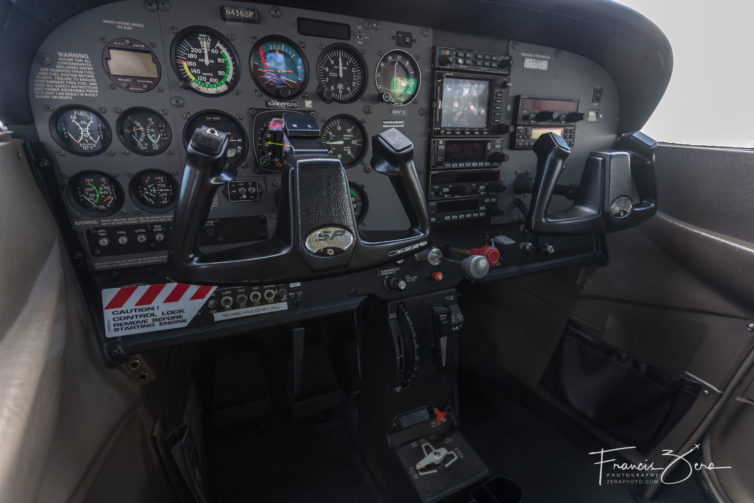
I’ve been told by pretty much everyone that learning in a plane with round dials instead of a digital display (aka glass cockpit) makes you a better pilot in the end. So, that’s my plan.
I sought out Galvin’s program because learning to fly at Boeing Field is akin to learning to drive in lower Manhattan – it’s a super busy airport, hosting both general aviation and lots of Boeing test/delivery fights. It has controlled airspace, it’s sandwiched between Seattle-Tacoma International Airport and Renton Municipal (which is where every 737 is assembled and takes its first flight), and is just a bit south of Paine Field, where Boeing builds its twin-aisle jets. The airspace around here is complicated.
It’s also bit more expensive here in the Pacific Northwest than in many other parts of the country; a Cessna 172 goes for close to $180/hour, and instructor time is about $80/hour. Ground school, taught by a certificated (welcome to the crazy world of FAA English) ground school instructor, is about $500.
I’ve met and selected my CFI (Certificated Flight Instructor), and we’re hoping to start flight training this coming week – Seattle’s fickle spring weather permitting, of course.
Galvin does have several FAA-approved flight simulators, which will probably come in handy when the weather is below approved VFR (Visual Flight Rules, aka those covering private/sport pilots) minimums. There’s a metric sh*t ton of information to learn, memorize, and apply before the actual flying part begins.
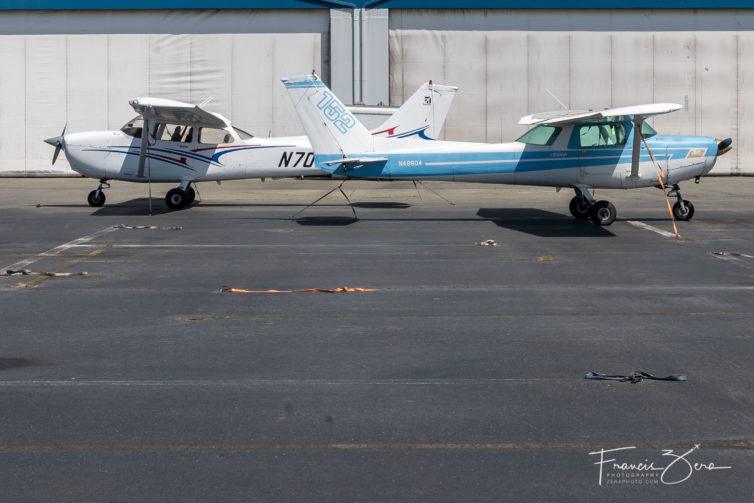
A two-seat Cessna 152 (foreground) and a four-seat Cessna 172 (background) on the Galvin ramp at BFI
As Capt. A. G. Lamplugh said in 1931, “Aviation in itself is not inherently dangerous. But to an even greater degree than the sea, it is terribly unforgiving of any carelessness, incapacity or neglect.” Thus, the rules and regulations are principally designed to keep you, me, and everyone else out there, safe.
So, yes, this is going to be a ton of work. But it’s already a ton of fun – I’m learning new stuff daily. I’ve already made some new friends at ground school, and summer is on the way, so we’ll soon be experiencing some of the best flying weather of the year.
This will be a regular column, hopefully culminating in my obtaining a private pilot certificate. I’m hoping to inspire folks to pursue their passion by sharing what it’s like to do this, sharing the ups and downs, so to speak, of learning to fly.
I’m also hoping that you’ll ask questions or share your thoughts in the comments.
Disclaimer: Galvin Flying is partially sponsoring this content; our opinions remain our own.
Good stuff, and thanks for sharing
Is your ultimate goal leisure flying or something more?
Thanks for asking, Chuck. As of now, I’m doing this for the joy of learning a new skill and to hopefully become a private pilot.
How much knowledge and ability for math/physics do you need?
Hi Tony – thanks for reading! So far, it’s all been basic practical/applied math and physics, I’d estimate at something close to high-school level. I’m expecting it’ll get a bit more complicated when we move into flight planning, and I’ll include info about what other math stuff I encounter as the training progresses.
Thanks for your answer! Tony
I’m looking to do the ATP school in a couple of years once all my financial ducks are in a row. Would you recommend going ahead and reading the FAR and AIM manuals and/or what else should I get my hands on to get as much of a headstart as possible?
Hi William, that seems like a good question to ask your local CFI – I’m a total newbie at this. That said, I con’t imagine that reading the FAR/AIM could be anything other than helpful. Our ground instructor did mention today that there are about 100 pages worth of new/updated info every year in the FAR/AIM, so be sure you’re reading the current edition.
Hi Francis, Great Post And Thanks for sharing. I am also doing the same. I have also been putting this off for a good number of years myself. It was also about being in a financial position to do it. I have recently enrolled in a Flight School and took the plunge and built courage to do so. It was never the fact that I had not felt I comfortable meeting other people who could fly, it was the fear of failure and being unable to fulfil my lifelong dream of taking control of a real aeroplane. I”m sure like many of us that love Aircraft, either sitting in the cockpit or simply trying to catch a glimpse of the Pilots sitting at the controls as you walk onto the commercial aircraft, it just gives you a buzz and the hunger to fly yourself. Anyhow, good luck and keep us posted, best wishes and a safe journey along the way.
Thanks for reading, 747BKR, and happy to hear that you’re learning to fly, too. Flying is a thrill like no other, and I’m excited to be learning, even when the new skills don’t come easily. Good luck and happy flying to you, too!